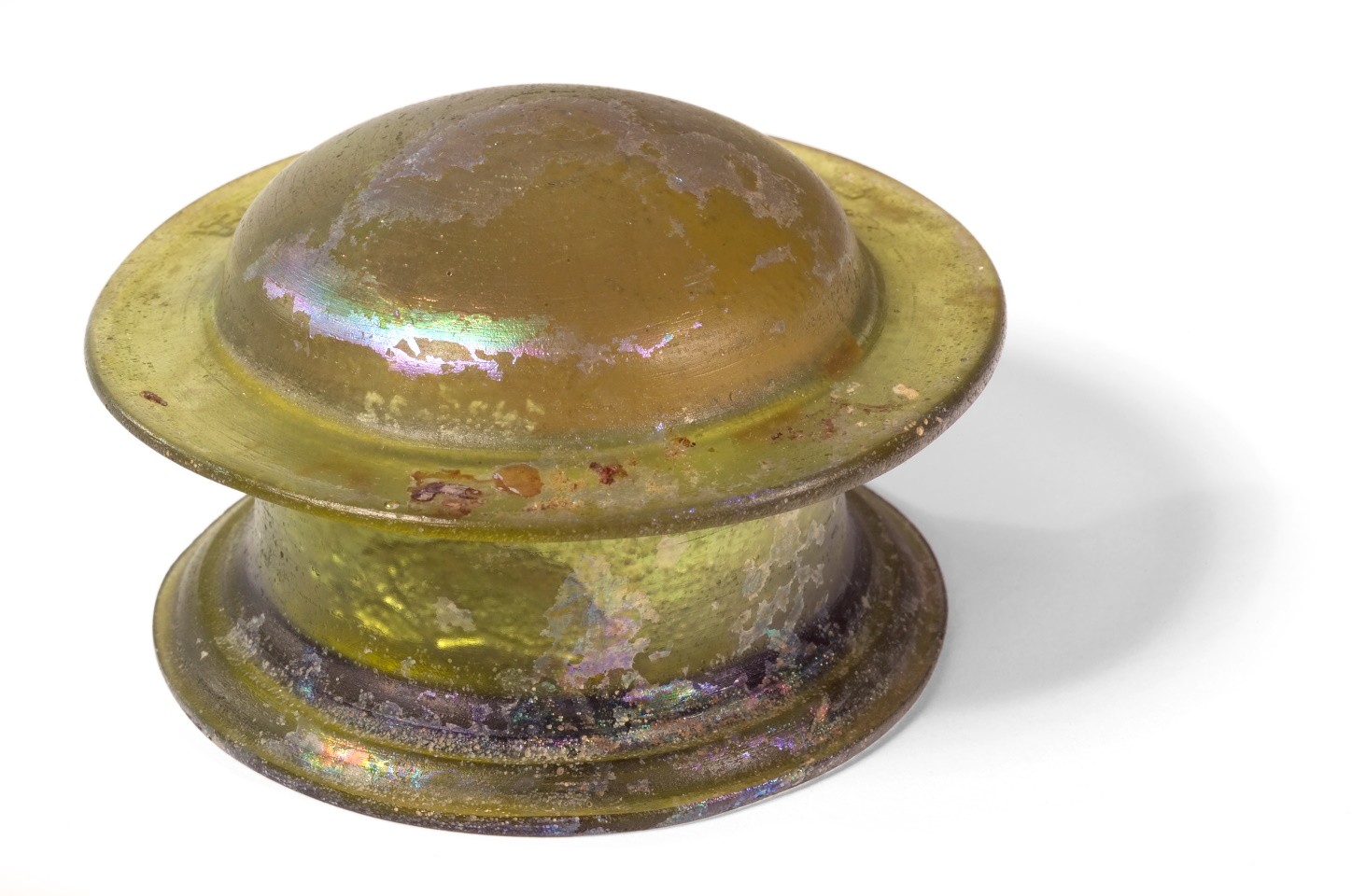Until now, it was assumed that these vessels were melted in moulds using the lost wax process. However, the irregular wall thickness and the crooked wall could indicate that these pyxides were made on the potter's wheel.
Workshops in ancient Elyros in western Crete were known for these jars made of glass, which are reminiscent in shape of sub-Italian pyxides made of clay. (AVS)
en

